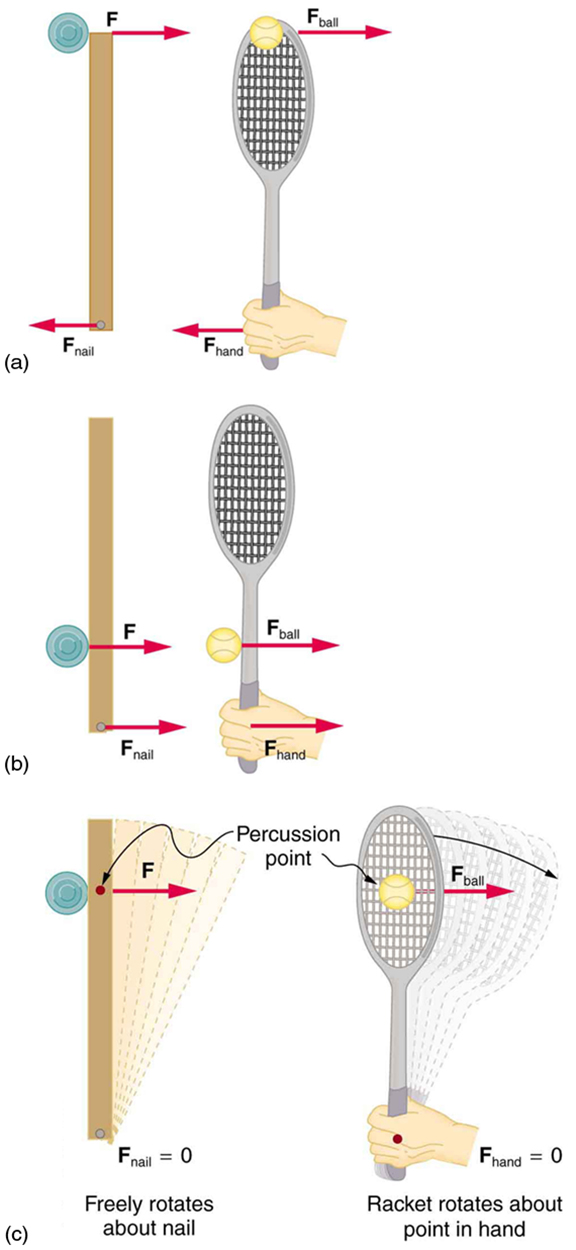| << Chapter < Page | Chapter >> Page > |
When the disk in [link] strikes the stick, it exerts a torque on the stick. It is this torque that changes the angular momentum of the stick. A greater torque would produce a greater increase in angular momentum. As you saw in [link] , the relationship between net torque and angular momentum can be expressed as , where represents the change in angular momentum and represents the time interval that it took for the angular momentum to change. How can you test this? Design an experiment in which you apply different measurable torques to a simple system. The torque applied to the stick can be varied by changing the mass of the disk, the initial velocity of the disk, or the radius of the impact of the disk on the stick. How will you measure changes to angular momentum? Recall that angular momentum is defined as .
The above example has other implications. For example, what would happen if the disk hit very close to the nail? Obviously, a force would be exerted on the nail in the forward direction. So, when the stick is struck at the end farthest from the nail, a backward force is exerted on the nail, and when it is hit at the end nearest the nail, a forward force is exerted on the nail. Thus, striking it at a certain point in between produces no force on the nail. This intermediate point is known as the percussion point .
An analogous situation occurs in tennis as seen in [link] . If you hit a ball with the end of your racquet, the handle is pulled away from your hand. If you hit a ball much farther down, for example, on the shaft of the racquet, the handle is pushed into your palm. And if you hit the ball at the racquet's percussion point (what some people call the “sweet spot”), then little or no force is exerted on your hand, and there is less vibration, reducing chances of a tennis elbow. The same effect occurs for a baseball bat.

Is rotational kinetic energy a vector? Justify your answer.
No, energy is always scalar whether motion is involved or not. No form of energy has a direction in space and you can see that rotational kinetic energy does not depend on the direction of motion just as linear kinetic energy is independent of the direction of motion.
A box with a mass of 2.0 kg rests on one end of a seesaw. The seesaw is 6.0 m long, and we can assume it has negligible mass. Approximately what angular momentum will the box have if someone with a mass of 65 kg sits on the other end of the seesaw quickly, with a velocity of 1.2 m/s?
(b)
A spinner in a board game can be thought of as a thin rod that spins about an axis at its center. The spinner in a certain game is 12 cm long and has a mass of 10 g. How will its angular velocity change when it is flicked at one end with a force equivalent to 15 g travelling at 5.0 m/s if all the energy of the collision is transferred to the spinner? (You can use the table in Figure 10.12 to estimate the rotational inertia of the spinner.)

Notification Switch
Would you like to follow the 'College physics for ap® courses' conversation and receive update notifications?